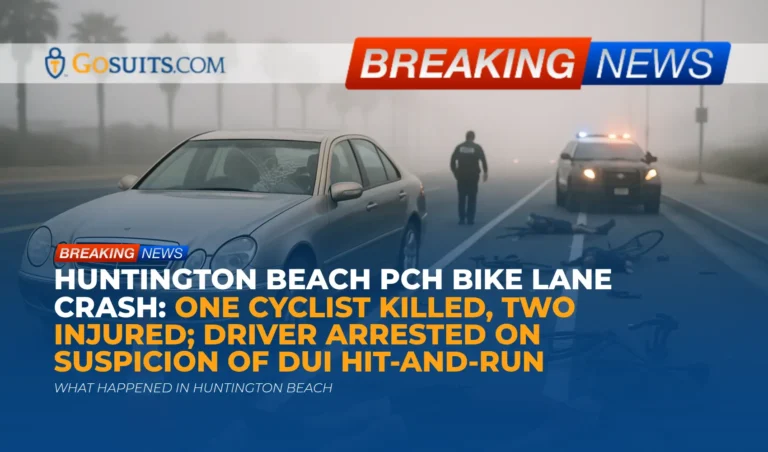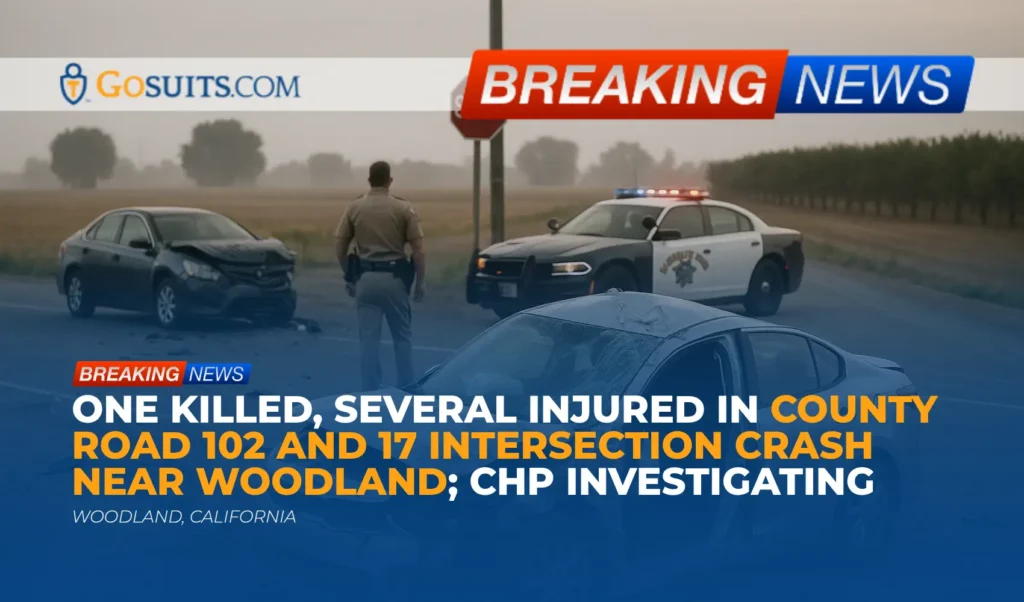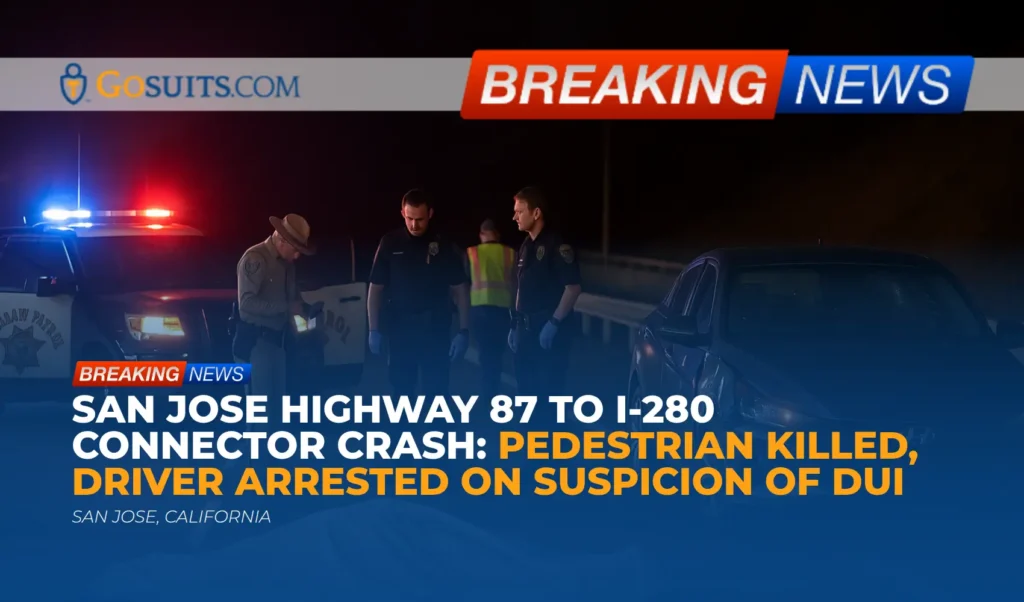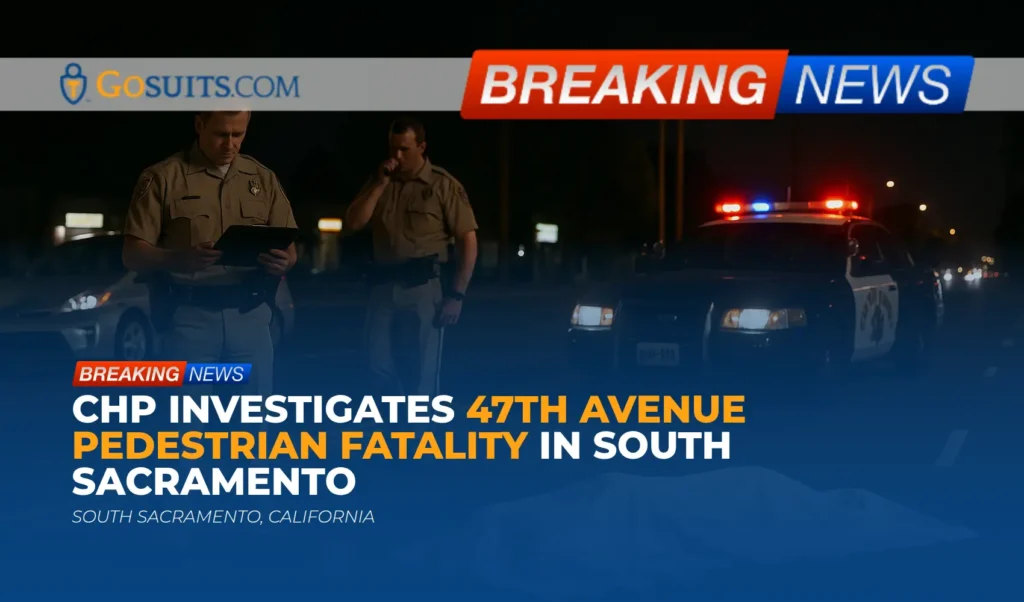- What happened in Huntington Beach
- What we know so far
- Weather and visibility on the coast that morning
- Rights and legal pathways for injured cyclists and families
- Who to contact for official records and information
- Evidence to preserve right away
- Insurance and financial considerations
- Community safety considerations for drivers and cyclists
- Practical next steps after a serious bicycle crash
- Emotional support and victim services
- Commentary from Gosuits Huntington Beach, California Personal Injury Attorney
- Why acting promptly matters: time-sensitive reasons to take action
What happened in Huntington Beach
On Monday morning, October 20, 2025, three cyclists were struck by a gold Mercedes E-Class along Pacific Coast Highway near Newland Street in Huntington Beach. The collision was reported at 6:47 a.m. Responding officers found three adult men in the roadway; one man was pronounced deceased at the scene, and two others were transported to a local hospital with severe injuries. The Orange County Coroner identified the deceased as 45-year-old Eric John Williams, who was a pastor in the community. The driver, a 43-year-old woman, was arrested on suspicion of driving under the influence and felony hit-and-run after reportedly continuing approximately half a mile before stopping. Authorities have not released further investigative details at this time.
This summary is based on publicly available reports and initial statements from local authorities. As investigations proceed, more information may become available from the police and coroner’s offices.
What we know so far
Location and timing
The collision occurred near the intersection of Pacific Coast Highway (State Route 1) and Newland Street in Huntington Beach shortly before 7 a.m. This is a coastal corridor with bike lanes and regular commuter, recreational, and cycling traffic.
People involved
Three adult male cyclists were involved. One man, identified by the Orange County Coroner as Eric John Williams, 45, died at the scene. Two additional cyclists sustained severe injuries but were reported conscious after hospital evaluations. A 43-year-old woman from Long Beach, identified by police, was taken into custody on suspicion of driving under the influence, felony hit-and-run, gross vehicular manslaughter, and possession of narcotics.
Early investigative notes
Police indicated the cyclists were within the bike lane when they were struck. After the initial impact, the vehicle continued for approximately half a mile before stopping. Weather forecasts from the National Weather Service indicated coastal fog that morning. Authorities have not cited weather or visibility as a cause of the crash at this time.
Weather and visibility on the coast that morning
The National Weather Service noted fog along the Huntington Beach coastline that morning, which can reduce visibility for all road users. You can review localized forecasts and conditions through the National Weather Service portal for the Huntington Beach area by entering the appropriate map coordinates on the NWS page at forecast.weather.gov.
While fog can degrade visibility, drivers are still legally required to operate vehicles safely and with due care for vulnerable road users. California law places explicit duties on drivers when approaching cyclists and when traveling near or within bicycle lanes. The presence of fog does not excuse unsafe passing, entering bike lanes unlawfully, or impaired driving.
Rights and legal pathways for injured cyclists and families
In serious bicycle collisions involving driver impairment and hit-and-run allegations, several civil law pathways may be relevant for injured people and for families of those who died. The points below provide general information grounded in California statutes.
Wrongful death claims and survival actions
- Wrongful death: California allows certain surviving family members to pursue a wrongful death claim for the losses they suffer after a loved one’s death, such as loss of financial support and companionship. See California Code of Civil Procedure section 377.60.
- Survival actions: The decedent’s estate may pursue a survival claim for harms the person suffered between injury and death, such as medical bills incurred before passing. See California Code of Civil Procedure section 377.30.
- Time limits: California generally sets a two-year statute of limitations for wrongful death and personal injury claims. See California Code of Civil Procedure section 335.1. Time can pass quickly during investigations; preserving evidence early is critical.
Duties of drivers in relation to bicycle lanes and cyclists
- Three-foot passing law: Drivers must provide at least three feet of clearance when passing a bicyclist, or slow to a safe speed and pass only when not endangering the cyclist if three feet cannot be given. See California Vehicle Code section 21760.
- Prohibition on driving in bicycle lanes: Motorists may not drive in a bike lane except under limited circumstances (such as within 200 feet of an intersection to make a turn, and only when it is safe). See California Vehicle Code section 21209.
Impaired driving and fleeing the scene
- Hit-and-run obligations: California requires a driver involved in a collision causing injury or death to immediately stop at the scene and fulfill duties such as exchanging information and rendering reasonable assistance. See California Vehicle Code section 20001.
- DUI causing injury: Driving under the influence resulting in injury is addressed by California Vehicle Code section 23153.
Civil liability is evaluated independently from any criminal investigation. Even when an arrest occurs, civil claims require evidence collection, proof of fault, insurance evaluation, and careful documentation of losses.
Who to contact for official records and information
Families and injured cyclists often need official documents to understand what happened and to manage practical matters like insurance, funeral arrangements, and time away from work. The following agencies are typical sources of authoritative information after a serious traffic collision.
Huntington Beach Police Department (HBPD) — collision and incident reports
- What you can request: Traffic collision reports, incident reports, and, in some cases, 911 call logs and Computer-Aided Dispatch (CAD) summaries. Availability can depend on the status of the investigation.
- Where to start: Visit the City of Huntington Beach Police Department page to learn about requesting police records: huntingtonbeachca.gov/departments/police. Cities commonly provide instructions for requesting collision reports and may offer online portals or in-person records counters.
Orange County Sheriff-Coroner — death investigation and autopsy records
- What you can request: The Orange County Sheriff-Coroner manages death investigations in the county. Next of kin can inquire about autopsy reports, cause and manner of death determinations, and related records, subject to legal restrictions and timing.
- Where to start: See the Orange County Sheriff-Coroner Division page for guidance on records and processes: ocsheriff.gov/commands-divisions/coroner.
California Highway Patrol (CHP) — collisions on state routes
- When this applies: If CHP investigated a collision on State Route 1 or assisted at the scene, some records may be held by CHP.
- How to request: CHP provides a standardized process for collision reports using Form CHP 190. Details are available at chp.ca.gov/records-forms/records-forms/request-a-collision-report.

Caltrans — potential roadway or traffic camera data
- What might be available: On state highways, Caltrans sometimes has maintenance logs, traffic operations information, or camera footage. Many cameras are live-only and not archived, but public records requests can clarify availability.
- How to request: Caltrans Public Records Act requests can be initiated at dot.ca.gov/programs/legal/public-records-act-requests.
Medical records and hospital documentation
- What to know: Injured individuals can request their own medical records, and next of kin may have limited access depending on authorization and privacy laws. Hospitals typically require HIPAA-compliant release forms.
Because investigations can restrict what is released and when, it can be helpful to track request dates and follow agency instructions closely.
Evidence to preserve right away
Important evidence can be lost quickly after a roadway tragedy. Preserving it safeguards the truth and protects the rights of those harmed.
- Bicycles and gear: Do not repair or alter the bicycles, helmets, lights, cycling computers, or clothing. Store items securely and document their condition with high-resolution photos and video.
- On-bike electronics: Save GPS and power meter data from bike computers and smartphone apps. Many devices record speed, direction, and intervals that can corroborate timing and positioning.
- Vehicle evidence: Photographs of the involved vehicle’s damage, windshield, and front-end components can be crucial. If available, preserve dashcam footage.
- Scene documentation: Photograph lane markings, the bike lane configuration, debris fields, skid marks, and any nearby construction or obstructions. Return soon after the collision to document lighting and visibility at the same time of day.
- Witness information: Secure full names, phone numbers, and email addresses of anyone who saw the collision or the vehicle’s movements before and after the impact.
- Official records: Keep copies of police case numbers, coroner references, hospital intake paperwork, and discharge summaries. Request and save all follow-up appointments and diagnostic results.
- Digital and video sources: Canvass nearby businesses and residences for security cameras that might capture the roadway, especially along Pacific Coast Highway between Newland Street and where the vehicle stopped. Many systems overwrite video within days.
Insurance and financial considerations
Insurance is often complex after a severe collision. The points below are general information; facts and policy language matter. Consider discussing coverage with a qualified attorney before making statements to an insurer. What someone says to an insurance company can be recorded and used against them later.
At-fault driver’s auto insurance
- Bodily injury liability: If the driver is insured, bodily injury liability coverage may apply to injured cyclists and to wrongful death claims by a decedent’s eligible survivors. Policy limits can be inadequate in catastrophic cases.
- Property damage: Bicycle and gear replacement may be pursued, but preserving the items first can be important for expert evaluation before replacement.
Your own coverage when riding a bicycle
- Uninsured/Underinsured Motorist (UM/UIM): California auto policies often extend UM/UIM benefits to insureds struck as pedestrians or cyclists. Review the policy’s definitions and exclusions carefully. General consumer information is available from the California Department of Insurance at insurance.ca.gov.
- Medical payments (Med-Pay): Some auto policies include Med-Pay that can help with medical bills regardless of fault, subject to limits.
- Health insurance coordination: Health insurance may cover treatment subject to co-pays and deductibles. Health insurers sometimes assert liens against third-party recoveries.
Crime victim assistance
- California Victim Compensation Board (CalVCB): If a qualifying crime is involved, CalVCB may help with certain out-of-pocket expenses like funeral costs and medical or mental health care, within statutory limits. See program information at victims.ca.gov.
Insurance carriers often request recorded statements quickly. Before speaking with any insurer, consider consulting an attorney to understand rights, coverage options, and claim strategy.
Community safety considerations for drivers and cyclists
Traffic safety is a shared responsibility. California law and national safety agencies emphasize protecting people outside vehicles.
- Drivers’ duties around bike lanes and cyclists: California codifies a minimum three-foot clearance when passing a bicycle and limits when motorists may enter bike lanes. See Vehicle Code 21760 and 21209.
- Avoid impairment and distraction: Alcohol, drugs, and distracted driving dramatically increase risk to cyclists and pedestrians.
- Respect speed and stopping distance in fog: In reduced visibility, drivers should slow down, increase following distance, and use low-beam headlights so they can perceive and respond to hazards in time.
- Cyclist visibility and positioning: While cyclists have a right to the road and to bike lanes, reflective gear and lights can improve detection in low-light conditions. These measures never shift responsibility away from impaired or reckless drivers; they are practical steps that can help in everyday riding.
- National perspective: Bicyclists are among the most vulnerable road users. For safety resources and national data, see the National Highway Traffic Safety Administration’s bicyclist page at nhtsa.gov/road-safety/bicyclists.
Practical next steps after a serious bicycle crash
These steps are offered to help the community understand the process after a devastating roadway incident. Every situation is unique.
- Prioritize medical care: Follow physician recommendations, attend follow-up appointments, and keep a complete file of discharge instructions, imaging, therapy plans, and prescriptions.
- Request official records: Obtain the police collision report from HBPD when available and, if applicable, coroner records from the Orange County Sheriff-Coroner. If CHP investigated, use the CHP process. See HBPD, OC Sheriff-Coroner, and CHP collision reports.
- Preserve physical and digital evidence: Save bikes, helmets, and electronics unaltered. Back up GPS and smartphone app data. Collect names and contacts for witnesses.
- Document losses: Track medical bills, time missed from work, travel for treatment, home care needs, and bicycle replacement costs. Keep all receipts.
- Be cautious with insurance communications: Before contacting any insurance company, consider speaking with an attorney. Statements to insurers can be recorded and may be used to limit or dispute claims later.
- Consider CalVCB assistance: If a qualifying crime is involved, review potential support through the California Victim Compensation Board at victims.ca.gov.
- Respect investigative timeframes: Some records remain confidential while active investigations continue. Keep track of case numbers and follow up periodically.
Emotional support and victim services
Grief after a sudden, preventable loss or life-altering injury is profound. Accessing support can help families and survivors cope.
- Crisis support: The national 988 Suicide and Crisis Lifeline is available by calling or texting 988 in the United States. More information is available through the Substance Abuse and Mental Health Services Administration at samhsa.gov/find-help/988.
- Victim compensation: California’s CalVCB may assist eligible victims and families with certain expenses, including funeral costs, medical and mental health care, and loss of support within program limits. See victims.ca.gov.
- Community and faith-based support: Many families find strength through community and faith groups. Consider connecting with local organizations to coordinate meals, childcare, or memorial needs.
Commentary from Gosuits Huntington Beach, California Personal Injury Attorney
Our hearts are with the family of Eric John Williams and with the two cyclists who were severely injured. The ripple effects of a crash like this are felt by family, friends, and the broader cycling community. The purpose of this commentary is to provide general information and perspective; it is not a substitute for tailored guidance.
From a civil-injury standpoint, early reports describing cyclists in the bike lane and a driver arrested on suspicion of DUI and hit-and-run raise serious safety and responsibility concerns. California law provides clear protections for people riding in bike lanes and reinforces drivers’ obligations to pass safely and avoid entering bike lanes except in narrow, safe circumstances. When impairment and fleeing are alleged, investigations tend to focus on corroborating physical evidence, witness statements, and any available video or digital data.
In our experience, insurance companies and corporate defendants often move quickly to protect their interests. They may seek recorded statements before facts are fully known, or interpret policy language in the narrowest possible way. Injured people and grieving families are at a disadvantage while managing medical care, funeral planning, and grief. Without a clear understanding of the rules that apply, it is easy to inadvertently say something that is later taken out of context or to overlook time-sensitive evidence like camera footage and device data.
That is why a free consultation can be valuable. It allows a person to ask questions, understand potential insurance coverage, and map out a plan for preserving evidence and protecting their rights without upfront cost. It also helps set expectations about how civil claims proceed alongside any law enforcement investigation.

Why acting promptly matters: time-sensitive reasons to take action
When a serious crash occurs, time affects both information and options. Acting promptly can make a measurable difference in the clarity of the record and the ability to seek accountability.
- Video and digital evidence disappears: Many businesses and residences overwrite surveillance footage within days. Cyclists’ Garmin or Wahoo devices, smartphones, and vehicle dashcams may auto-delete older files as storage fills. Securing copies immediately preserves crucial context.
- Witness memories fade: The most accurate accounts are often recorded soon after the event. Waiting weeks can reduce detail and certainty, especially about distances, speeds, or sequencing.
- Physical scene changes: Temporary lane markings, construction zones, and debris fields are cleaned up quickly. Early scene documentation can capture conditions that no longer exist later.
- Insurance processes start early: Claim departments open files and set reserves quickly. Understanding coverage before providing statements can prevent missteps and clarify available benefits like UM/UIM or Med-Pay.
- Statutory deadlines apply: California’s general two-year statute of limitations for injury and wrongful death claims, found at CCP 335.1, may seem distant but can arrive fast amid treatment, investigations, and family needs. Certain claims against public entities can have much shorter notice requirements.
- Coordinating with official investigations: Keeping track of HBPD and Orange County Sheriff-Coroner case numbers, and making timely records requests, helps ensure families receive updates as they become available. See HBPD and OC Sheriff-Coroner.
What should be done, and why it matters now
- Secure official records: Request the police collision report and, when applicable, coroner documents as soon as they are available. These form the backbone of insurance and civil claims.
- Preserve and collect evidence: Gather device data, photos, and witness contacts immediately. Early preservation prevents loss and strengthens factual clarity.
- Organize medical documentation: Keep every bill, referral, MRI, and therapy record in one place. Comprehensive records support recovery of medical costs and demonstrate the full impact of injuries.
- Discuss the matter with an attorney before contacting insurance: A free consultation helps clarify rights and risks. Recorded statements to insurers can be used later and may be taken out of context.
- Evaluate all potential coverage: Review the at-fault driver’s policy if available, plus your own UM/UIM and Med-Pay. The California Department of Insurance offers consumer guidance at insurance.ca.gov.
- Seek community and emotional support: Utilize resources such as the 988 Lifeline via SAMHSA and consider assistance through CalVCB for eligible expenses.
Key legal and safety references
- California Vehicle Code 21209 — Driving in a bicycle lane: leginfo.legislature.ca.gov
- California Vehicle Code 21760 — Three-foot passing requirement: leginfo.legislature.ca.gov
- California Vehicle Code 20001 — Duty to stop at the scene of a collision: leginfo.legislature.ca.gov
- California Vehicle Code 23153 — DUI causing injury: leginfo.legislature.ca.gov
- California Code of Civil Procedure 377.60 — Wrongful death: leginfo.legislature.ca.gov
- California Code of Civil Procedure 377.30 — Survival action: leginfo.legislature.ca.gov
- California Code of Civil Procedure 335.1 — Two-year statute for injury/wrongful death: leginfo.legislature.ca.gov
- National Weather Service — Localized forecast map for Huntington Beach area: forecast.weather.gov
- NHTSA — Bicyclist safety overview: nhtsa.gov/road-safety/bicyclists
- California Department of Insurance — Auto insurance consumer resources: insurance.ca.gov
- Caltrans — Public Records Act requests: dot.ca.gov
- Orange County Sheriff-Coroner — Coroner Division: ocsheriff.gov
- California Victim Compensation Board — Program information: victims.ca.gov
- SAMHSA — 988 Suicide and Crisis Lifeline: samhsa.gov/find-help/988






